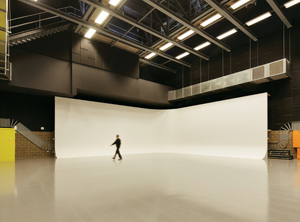Aussiewood: our guide to Australia’s film studios
 Australia now boasts four main production studios with facilities of international calibre. Set to take on the Hollywood big league, Georgina Pearson gives a brief snapshot of each studio in its current state.
Australia now boasts four main production studios with facilities of international calibre. Set to take on the Hollywood big league, Georgina Pearson gives a brief snapshot of each studio in its current state.
In order to compete with such universal giants, Australia’s studios must offer that little bit extra – a uniqueness not found anywhere else. While perhaps considerably smaller in comparison to the backlots of Hollywood, Australia’s absolute landscape versatility has proved to be a substantial draw-card.
Jon Cassar executive producer for Stephen Spielberg’s Terra Nova (which shot on location in the Gold Coast Hinterland as well as the Gold Coast’s Village Roadshow Studios) told Encore when searching for the right studio you have to weigh up several factors. “You look at two things. You look at infrastructure and studio space. We started with two studios and we’re already up to three. Having the volume of studios to pick from is good. And they came here because there is as much varying jungle in a close parameter.”
Adelaide
Albeit the smallest of the four, Adelaide Studios is an entirely new complex and perhaps compliments rather than competes with Australia’s existing studios. Richard Harris, CEO of Adelaide, told Encore the concept was to create not just a production studio
but a community of industry professionals. “We are connected to an industry hub and the SAFC (South Australian Film Corporation). We actually deliberately developed the whole idea of the site to create a hub of filmmaking production and practitioners.” Open for just over two months, it offers state-of-the equipment, including two sound stages, production offices, wardrobe facilities, recording and editing suites and a 96 seater theaterette. Harris explained that it aims to target mainly domestic productions. “Where we differ from the rest is we are not huge, I mean our largest soundstage is 1000m2 and that is probably one of the smaller ones on the Fox lot. We are primarily targeted towards the domestic Australian production market. So it was a very deliberate decision to target domestic productions, rather than try to replicate what they had on the East Coast.


Guys, WIll you please kindly return SEA PATROL to TV or, make at least one movie . In my opinion, it should have never been brought to an end and, especially NOT like the ending of season 5, episode 13. There was enough time for both JIM and the SWAIN to throw the Cesium suitcases and themselves into the water.
Why would you ever want to get rid of such a popular TV series. I do believe you haven’t heard the last of this from this show’s fans.
BTW, you need to produce a TV series to fill the gap that STAR TREK left behind.
May I suggest a no nonsense, hard nosed, hard science approach with a SEA PATROL style of writing and characterization. If done correctly, this would become as big a hit as Star Trek. ———- STORM CROW —
I presume when they say Adelaide first ever series they mean Adelaide Studios.